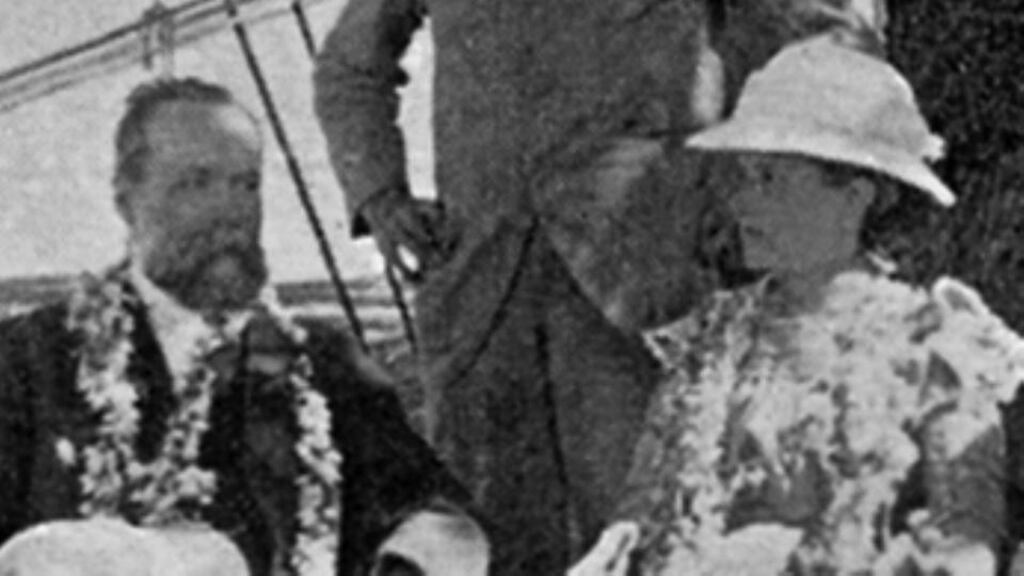One of the first professional women astronomers in these islands was Annie Russell, or Mrs Annie Maunder, and April 14th marks the anniversary of the birth of this inspiring Irish woman.
Her story is one of talent, opportunity and a perseverance that saw her become an international expert on the science of the sun. Yet she left Cambridge without a degree, worked at the lowest rank in the Royal Greenwich Observatory, had to resign after only four years when she married, and saw most of her work published under her husband's name. Such were the restrictions facing women scientists then, but today there's a crater on the moon named after her.
Russell was born in Strabane in 1868 and attended Belfast Ladies Collegiate School (now Victoria College Belfast). She won a scholarship to the all-women Girton College in Cambridge, and came top of her class in mathematics, but neither she nor any of her class graduated. Cambridge let women sit exams but did not award them degrees until 1948, nearly 60 years after Russell left.
When she finished at Girton in 1890, the Greenwich observatory began an unusual “experiment”: it started to employ women. It was a bold move by director Sir William Christie. However, he was only allowed to appoint college-educated women to the lowest grade of “supernumerary computer”, a job usually given to teenage boys.
Russell had begun working as a schoolteacher but was so keen to work in science that she chased the Greenwich job, even though the pay was poor. In 1891 she joined the solar department and found her niche: studying the sun, sunspots and magnetic storms.
A respected astronomer, Walter Maunder, led the department, even though Russell was better educated than he was. In 1895 Russell married Maunder, a widower 18 years her senior. The civil service ban on married women meant she had to resign, but she and Maunder began a collaboration that lasted 33 years.
These days it's easy to travel to see remote eclipses – witness the many people who travelled to the far north for last month's eclipse – but 120 years ago it was quite an undertaking. Yet Russell and Maunder notched up expeditions to Norway, India, Algiers, Mauritius and Labrador.
Russell was a skilled eclipse photographer. For the 1898 Indian expedition, she designed her own camera, beating all the big instruments to capture an image of a streamer from the sun’s corona that was 10 million kilometres long, the longest that had then been seen. However, the conventions of the day meant that her photograph was published under Maunder’s name. Much of her work was published under his name, as happened often for married female scientists at that time. It is only in recent decades that her contribution has been fully recognised.
The couple’s contributions
The couple made several important contributions. In 1904, they mapped the location of sunspots over several sunspot cycles. The resulting "butterfly diagram" – so-called because the pattern resembled butterfly wings – revealed how sunspots early in a cycle are mostly at high latitudes on the sun's face, migrating towards the equator late in the cycle.
They confirmed the work of German astronomer Gustav Spörer, who first noticed that part of the Little Ice Age coincided with 70 years of little or no solar activity, a phenomenon now known as the Maunder minimum. They also showed that magnetic storms on Earth occur in 27-day cycles, caused by the sun’s corona and not its face.
In 1915, the Royal Astronomical Society finally admitted women members, and Russell was among the first, having been refused membership 25 years earlier.
Walter Maunder died in 1928, but Russell continued working, especially as editor for the British Astronomical Association, and writing the association's history for its 50th anniversary. She died in London in 1948.
There's more about Russell's life and legacy in a biography written, appropriately, by Ireland's first female astronomer, the late Dr Máire Brück, in the book Lab Coats and Lace.
Russell and her husband are commemorated by the Maunder crater on the moon, something she would never have imagined back in 1890, when she sought to become one of the first professional female astronomers. Something to remember her for next Tuesday.
Mary Mulvihill is a science writer. She tweets about Irish science heritage at @IngeniousIE









